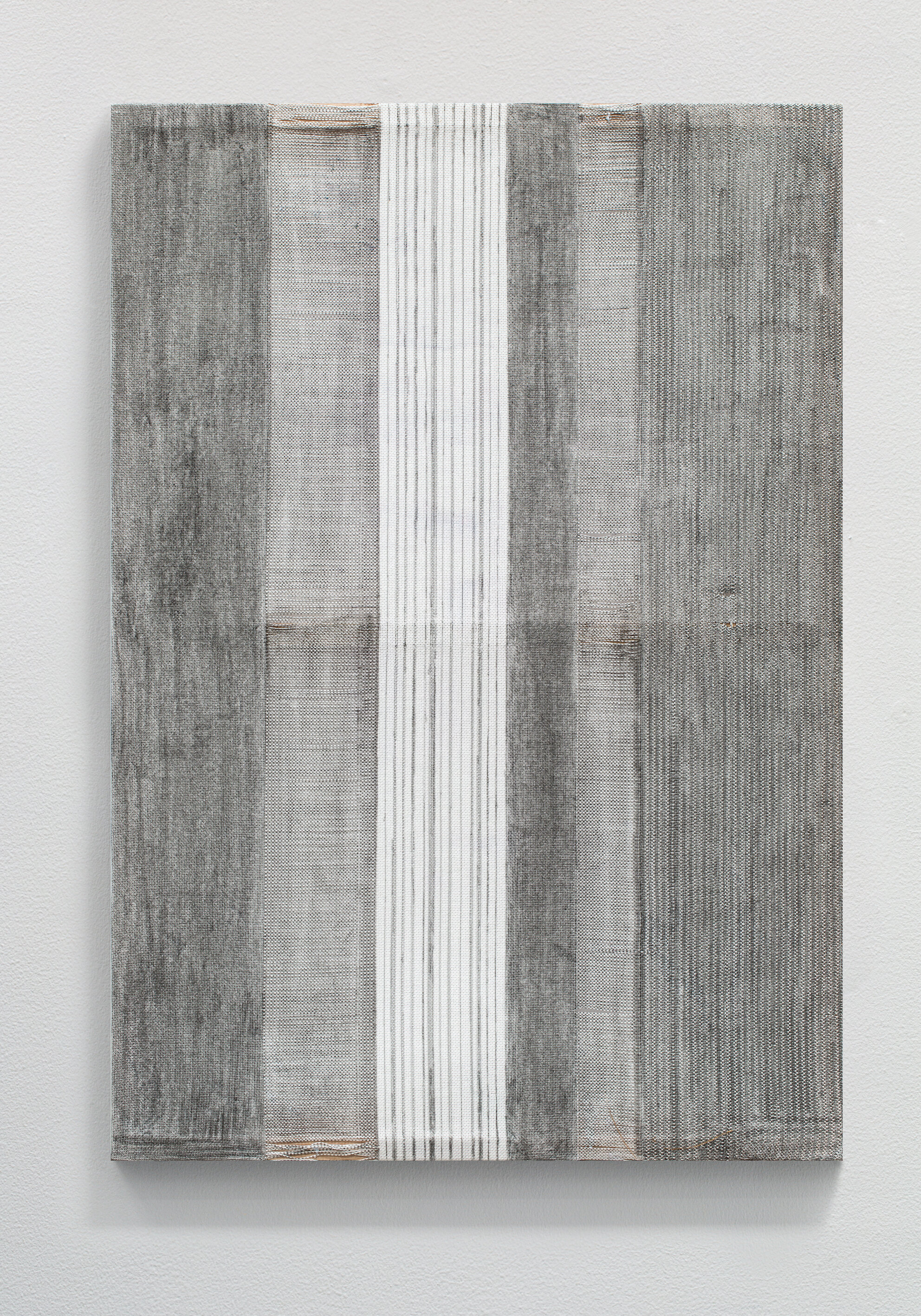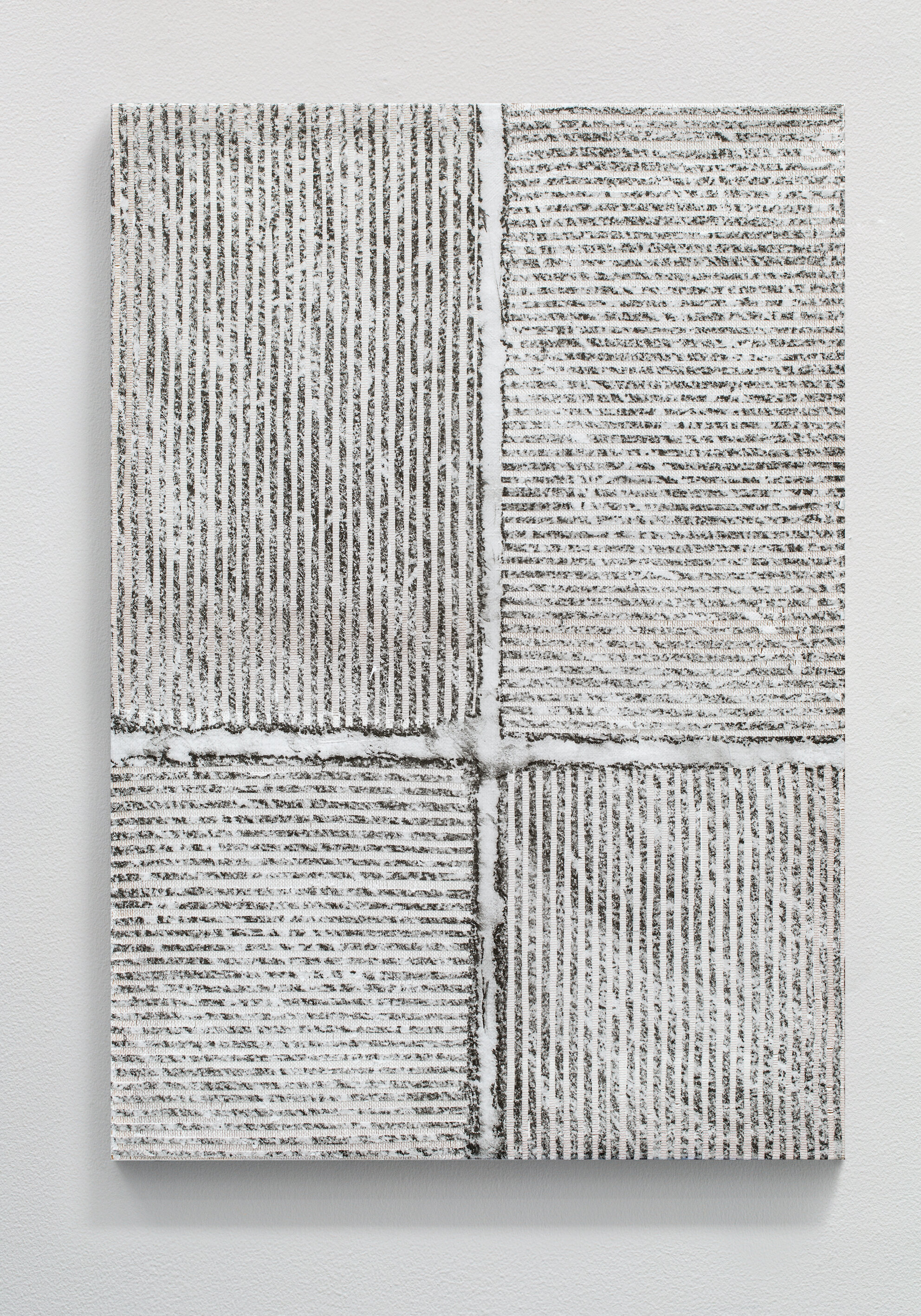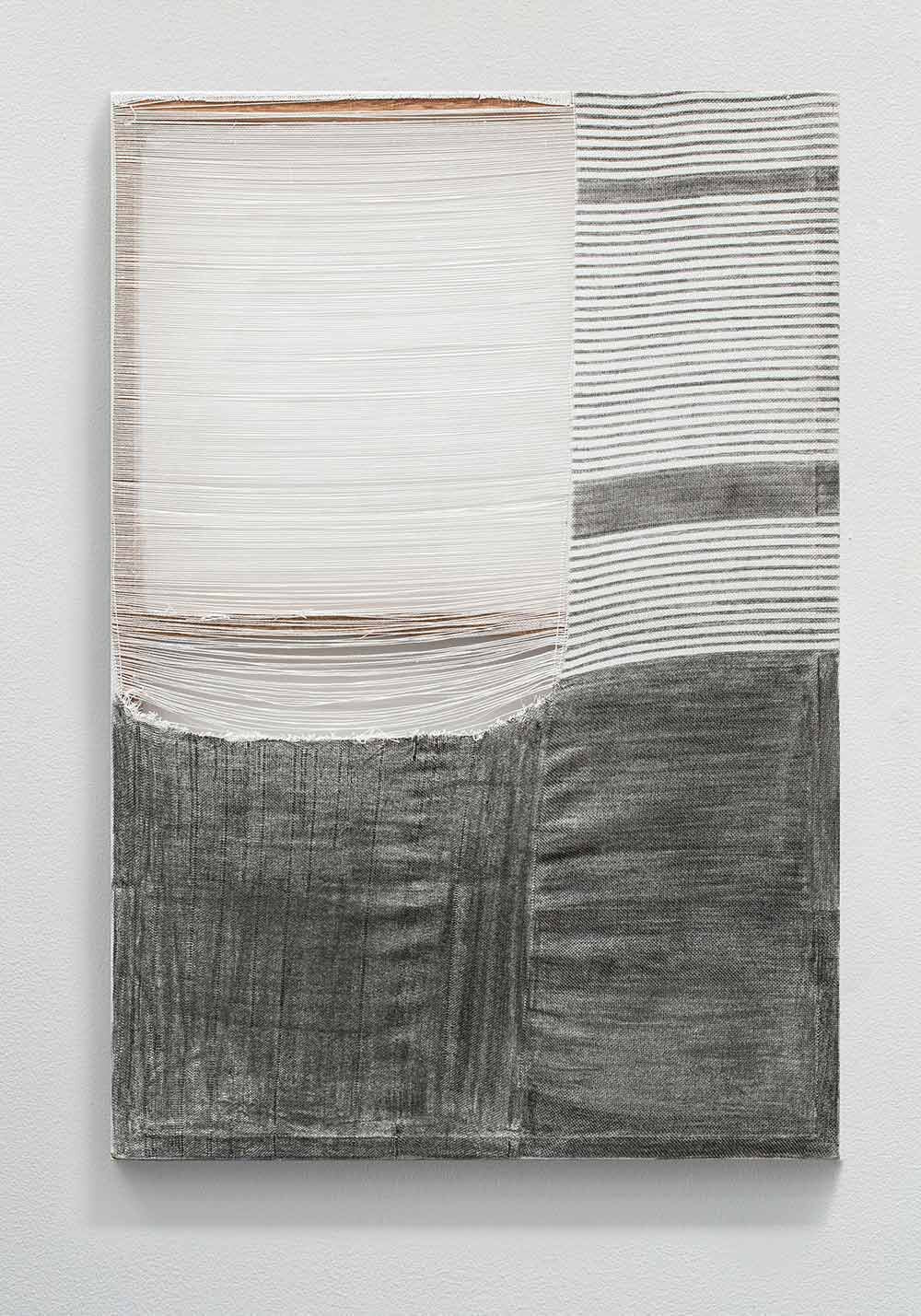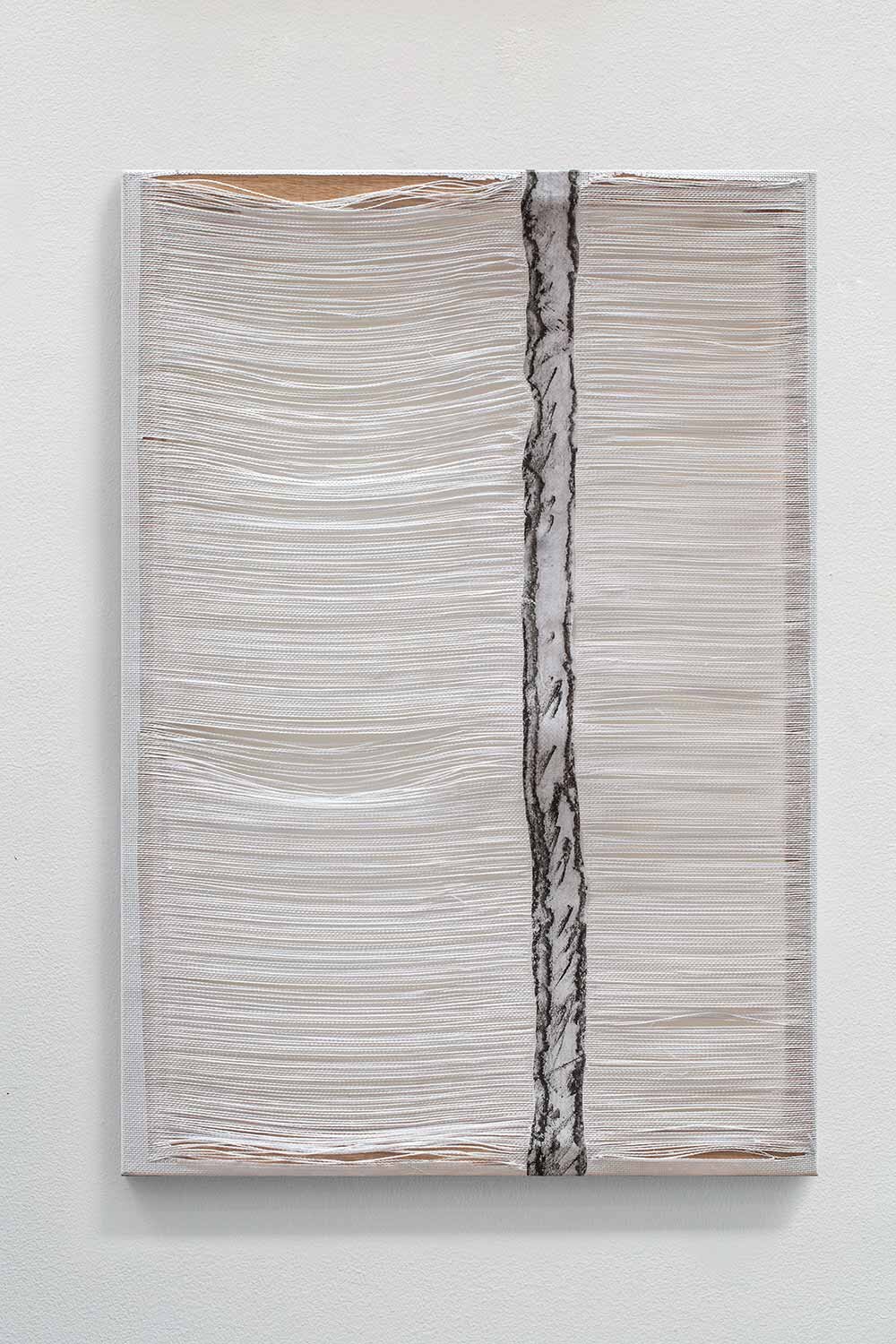Desvios exhibition view at Simon Preston Gallery, New York 8 Set - 30 Oct 2016
PRESS RELEASE
The exhibition is comprised of a central video animation and a series of monochrome wall works. Desvio, 2016, shown on a large-scale monitor, is generated from fragments of a strip of found billboard material originally sourced from the back of a fifty-meter awning in Dubai. Each individual frame is initially scanned, then printed and further abstracted through various methods of incising, rubbing, cutting, zooming, mirroring, and finally captured again on a flatbed scanner. The sequential montage of more than a thousand individual images creates a consistent vertical linear strip animated by a constantly changing background and foreground. The resulting physicality of the image creates a sense of conventional recorded camera movement and reflects the physical form of traditional film.
Mein further confronts the materiality of images through a series of geometric works on canvas. Evolved from various forms of facsimiles captured through rubbings of architectural reliefs, the backs of completed unthreaded works, and directly rubbing on its surface, these copies are adhered onto the surface of the canvas. Mein then systematically interrupts the monochrome graphite images by rigorously cutting and unthreading the underlying fabric structure. Experimenting with the interplay between the actual impression on fabric and its surface, the excavated material creates subtle and varied, vertical and horizontal grids akin to minimalist traditions. However, each structure contains a precariousness of the handmade that interrupts the straight angles and hard edges, revealing its processes.
As reflected in the exhibition title, Desvios, translated from the Portuguese word meaning diversions, the works each create sites of controlled but uneven dismantling and misalignment. Evocative of mechanical printing processes, the materialization of the artist’s hand follows in the lineage of structural filmmakers, as an antithesis of traditional modes of mark making. The material process, with its emphasis on the copy and facsimile, and prioritization of their inherent errors and alterations, generates the subject as an aesthetic strategy, building spaces of tension







